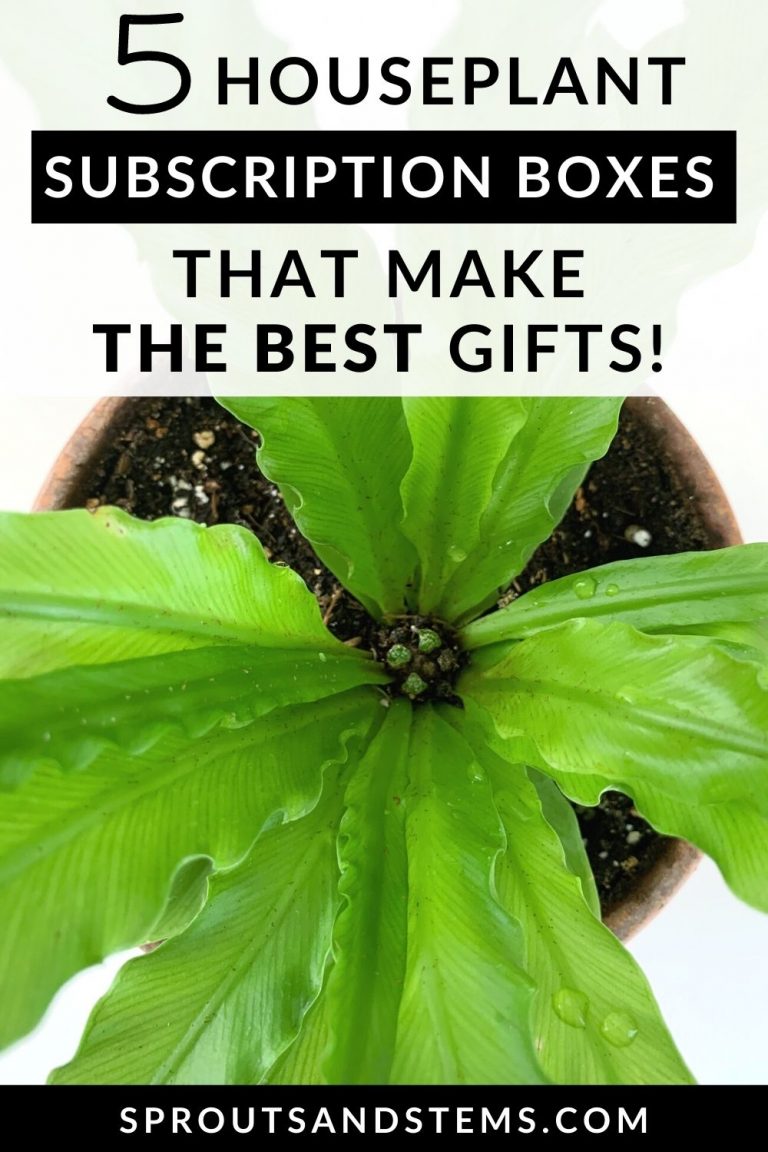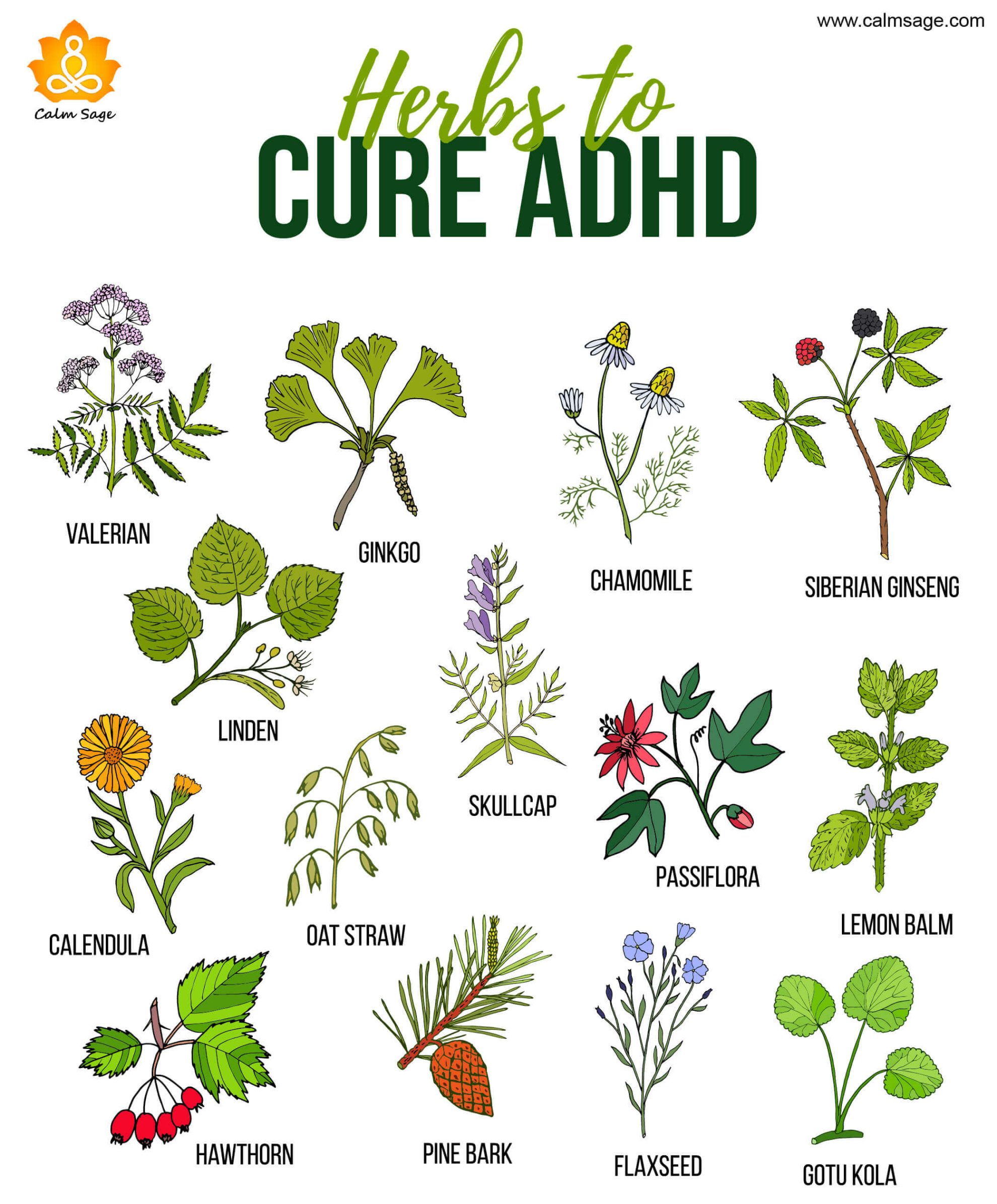Discover the Magic of Bottle Gardens: Your Ultimate Miniature Terrarium Guide

Years of hard-earned wisdom, unexpected insights, and all my best secrets — from a bottle garden obsessive to you.

I’ve built bottle gardens in everything from antique demijohns inherited from my great-aunt’s cellar to embarrassingly sticky peanut butter jars I fished out of the recycling. Forget the filtered Instagram feeds—my first attempt was a foggy disaster that smelled like compost tea left in a hot car. But after a decade spent coaxing lush micro-jungles to life on windowsills, desks, and even as centerpieces for weddings (yes, with tiny paper cranes perched amongst the moss), I can promise: there’s nothing more magical than watching your own bottled universe thrive.
If you’re ready to go way beyond “just layer some rocks and soil,” buckle up. This guide isn’t regurgitated how-tos—it’s every trick, lesson learned from spectacular failures, and pro-level hack I wish someone had handed me years ago.
1. What No One Tells You About Bottle Gardens
Bottle gardens aren’t just décor—they’re living experiments in self-sufficiency.
The magic? Once established, a sealed terrarium can run for years without intervention. David Latimer famously sealed his carboy garden in 1960, only cracking it open once (in 1972) to add water; it’s still alive today! But here’s what those feel-good anecdotes skip: getting your ecosystem truly balanced is both art and science…and sometimes feels more like playing chess with humidity and mold.
Why They’re Not Just “Easy” Houseplants
- Humidity cycles: Watch closely—the glass fogs in the morning as moisture condenses, then clears as plants reabsorb water.
- Nutrient cycling: Decaying leaf bits feed your next wave of growth—if you have the right microbes.
- Microclimate control: A closed jar isn’t forgiving; too much sun or water triggers rot faster than you’d believe.
Bottom line: Each bottle garden has its own personality. Some thrive on benign neglect; others become needy drama queens if you get one detail wrong.
2. The Real Anatomy of a Bottle Garden (Layers That Work—And Those That Don’t)
Forget the Pinterest-perfect cross-sections. Over time, I’ve learned which layers are essential—and which are overhyped.
The Reliable Recipe
1. Drainage Layer (¾–1 inch):
Aquarium gravel, LECA balls, or even coarse sand work best—skip sea shells (they leach minerals) or colored craft stones that bleed dye if wet for months.
2. Activated Charcoal (~½ inch):
Non-negotiable for closed systems! It filters toxins and keeps funk at bay. Don’t use BBQ charcoal; splurge on aquarium-grade carbon pellets ($7 lasts years).
3. Barrier Layer (optional but wise):
Sphagnum moss or fine mesh prevents soil slumping into drainage—a game-changer for clarity when roots eventually peek through the sides.
4. Substrate/Soil (~2–4 inches):
Here’s where generic advice fails most folks:
- For ferns/mosses: Mix coconut coir + worm castings + fine bark + perlite (I aim for 40/30/20/10 ratio).
- For succulents/cacti: 60% gritty sand + 25% cactus mix + 15% horticultural charcoal.
Tested tip: Always pre-moisten your substrate so it clumps lightly but doesn’t drip when squeezed.
If you want to dive even deeper into soil science and custom mixes for your setup, check out The Best Soil and Substrate Mixes for Healthy Bottle Gardens.

5. Planting & Top Dressing:
Plant roots just below surface; tuck cushion moss around bases to lock in humidity.
Top off with decorative gravel or living moss only after main planting is done—prevents compaction disasters later.
3. Choosing Plants Like an Insider
It took me three failed jars full of crispy ferns before I realized: the container dictates your plant list—not the other way around.
If you’re struggling to pick the right greenery, How to Choose the Best Plants for Your Bottle Garden offers a comprehensive breakdown of plant personalities, humidity needs, and size considerations.
Closed Jars Love:
- Fittonia albivenis (“Nerve Plant”)
- Selaginella kraussiana (“Spikemoss”)
- Peperomia caperata
- Cushion moss/Sheet moss
Rare find alert: Pilea glauca thrives like ivy under glass—if you snag a cutting from a friend, guard it jealously!
Open Terrariums Only:
- Echeveria spp., Haworthia, other true succulents
- Tillandsia (“Air Plants”)
Counterintuitive truth: Many ‘tropical’ houseplants struggle inside jars that stay above 75% humidity long-term—they rot at the base first before leaves show problems!
Pro Story
Back in spring 2019, I tried sneaking a miniature Monstera adansonii into an elaborate closed setup…only to watch it melt down over two weeks while humble fittonias next door exploded with new leaves overnight.
4. Light & Water—The Unspoken Rules
Nearly every bottle garden failure traces back to these two factors:
Light
Indirect sun = ideal.
South-facing windows filtered through sheer curtains work wonders; east-facing sills are perfect for newbies.
LED grow lights set on timers (8–10 hours/day) are lifesavers in winter or windowless offices.
Rule of thumb: If you can read comfortably by natural light where your jar sits at noon, it’ll thrive.
Water
Less is always more!
My golden metric: After assembly, mist until substrate is evenly damp but not soaked—then wait two weeks before reassessing.
If condensation pools constantly, crack open the lid half an hour daily until balance returns.
In summer heatwaves? Resist top-ups unless leaves visibly wilt; overwatering breeds mold armies overnight!
If you want to master the art of keeping your bottle garden’s climate just right, don’t miss Maintaining Moisture and Humidity in Miniature Terrariums for actionable tips and troubleshooting.
![Mini Bottle Terrarium [Video] in 2022 | Terrarium, Terrarium plants ...](https://i.pinimg.com/originals/0e/ce/ca/0ececaeb876bb8da3560dac6a933eab2.jpg)
5. Step-by-Step Assembly — With My Best Tricks Baked In
Let’s skip the bland bullet points and walk through what actually works:
-
Scavenge Your Vessel:
Best finds? Estate sales for old whiskey decanters or thrifted fishbowls under $5.
Wide mouths = easy access; narrow = epic challenge but stunning results if you succeed (long tweezers required!). -
Deep Clean:
Use scalding water + unscented soap + vinegar rinse for any reused container—even microscopic residue sabotages plant health months later. -
Precise Layering:
Tilt your vessel as you pour each layer for diagonal “landscapes.” Looks gorgeous when viewed from multiple angles and helps excess moisture drain toward one end if needed—a real problem-solver in tall bottles! -
Plant Handling:
Snip away all blackened roots/leaves before planting.
Pro move: Use bamboo chopsticks wrapped with soft cloth to tamp soil around delicate stems without bruising them—all while working at arm’s length inside deep jars! -
Decorate Wisely:
Natural stones > plastic trinkets long-term due to chemical leaching risk (learned this after one blue-dyed shark figurine caused green algae blooms everywhere).
Driftwood adds vertical drama but pre-soak it overnight—to evict lurking insects and prevent future cloudiness. -
Water Gently:
A pipette lets you target root zones directly; avoid splashing foliage except during initial misting. -
Settle In & Observe:
First week sets the tone! Look every morning/evening:
Is condensation forming then clearing? Perfect.
Excess droplets dripping down glass by noon? Air out daily until system stabilizes. -
First Trim When Needed:
Prune aggressively at first sign of overcrowding—even if they look healthy! Your future self will thank you when airflow stays high and mold never gets a chance.
If you’re just starting out and want a beginner-friendly walkthrough, follow the Step-by-Step Guide to Building a Bottle Garden for Beginners for a clear, confidence-boosting introduction.
6. Avoiding Rookie Mistakes…From Someone Who Made Them All
Let me spare you some painful lessons:
Mistake #1 – Overzealous Watering
My second-ever terrarium turned into primordial soup after watering “just in case” on day three…and again on day five because “maybe it dried out!” Result? Foul stench and rotted roots within days.
Fix: Only add water when topsoil feels dry OR no condensation forms by late morning.
Mistake #2 – Mixing Plant Types
Tried combining mini cactus with button fern for contrast inside same closed jar…by week four only fungus gnats survived between them!
Fix: Stick religiously to either humidity-lovers OR desert dwellers per jar—never both together.
Mistake #3 – Ignoring Cleaning Up Dead Material
One overlooked yellow fittonia leaf bred spotty white fuzz that soon spread everywhere…
Keep tweezers handy; remove decaying matter weekly without fail.
Mistake #4 – Wrong Light Location
I once moved my prize terrarium onto an unshaded west-facing ledge “for better growth.” Two days later? Glass magnified afternoon rays cooked everything inside like spinach lasagna.
7. Advanced Territory — Bioactive Systems & Living Maintenance Crews
Want virtually maintenance-free ecosystems? Here’s where things get fascinating:
Add Springtails & Isopods
Tiny white bugs called springtails consume mold/fungus before humans ever notice trouble brewing—and they never bother plants themselves!
Order starter colonies online ($10 covers dozens of builds). Add beneath sphagnum layer—watch population boom quietly behind scenes.

Custom Substrates
Mix small amounts of crushed charcoal/bark/sand directly into potting mix—not just as barriers—for breathability AND disease resistance over seasons.
High-Tech Lighting Schedules
An inexpensive timer outlet + full-spectrum LED strip ($25 online) ensures plants get precise daylight year-round—even during bleak January afternoons.
8. Tools Worth Their Salt (& Where Not To Waste Money)
Over time I’ve amassed an entire toolkit—but honestly, here are my must-haves:
| Tool/Supply | Real-world verdict | Pro Tip |
|---|---|---|
| Long Aquascape Tweezers | Indispensable past ~8" depth | Stainless steel lasts longest |
| Pipette/Squeeze Bottle | Precision watering | Old contact lens bottles work |
| Aquarium Gravel | Top drainage performer | Wash thoroughly before use |
| Activated Charcoal | Mold prevention essential | Bulk aquarium packs cheapest |
| LED Grow Lamp | Game-changer for low-light rooms | IKEA Växer lamp = bargain |
| Soft Art Brush | Dusts inside glass cleanly | Wrap cloth around end |
Skip pricey terrarium kits unless gifting—a DIY approach means cheaper materials and better plants tailored to local climate conditions.
Favorite buys over ten years:
- Used Mason jars ($1 apiece)
- Fluval aquascaping tweezers (lasted five years so far)
- Bulk New Zealand sphagnum moss
9. Case Studies — Real Bottled Worlds That Thrived (& Why)
Marcus’ Six-Month Miracle Jar
A friend texted me last June about his “black thumb”—he wanted something impossible-to-kill on his grad student budget.
We found an old pickle jar outside his apartment dumpster (!), layered scavenged pea gravel under $3 bagged soil plus snippets of creeping fig and driveway moss he misted once weekly—and as of writing this, he hasn’t opened the lid since autumn yet both plants keep growing strong under a cheap clip-on grow lamp.
Priya’s Redemption Succulent Bowl
Priya endured three rounds of mushy echeverias before switching from closed pickle jars to an open-sided salad bowl with sandy grit found at her kid’s sandpit plus jade cuttings gifted by her grandmother…two years later those jades bloom every spring despite only rare sips of water!
My Own Heirloom Fern Carboy
Inherited from my late uncle Ray—a Victorian-era demijohn shipwrecked in cobwebs—I revived centuries-old design using only native New England ferns dug up post-thunderstorm plus wild-gathered sheet moss rinsed thrice by hand… It now anchors my kitchen window sill and guests always ask how often I care for it (“Really—I trim twice yearly!”).
10. Troubleshooting Like an Experienced Pro
Every seasoned terrarium keeper has felt panic seeing fuzzy mold bloom overnight or mystery bugs appear—but most issues resolve fast if caught early:
Mold Outbreak?
Spot treat with diluted hydrogen peroxide via cotton swab;
Ventilate daily until fuzz vanishes;
Introduce springtails if not already present—they’re absolute miracle workers!
Foggy Glass Won't Clear?
Move away from direct sunlight;
Open lid slightly several hours/day;
Wipe gently with microfiber if persistent smudges remain (never use harsh cleaners).

Wilting or Rotting Plants?
Uncap immediately;
Trim affected areas ruthlessly;
Reconsider plant selection next time—humidity mismatch may be culprit!
Gnats Everywhere?
Sticky cards trap adults;
Dry substrate between mists;
Reduce decaying matter;
Add predatory nematodes/springtails if infestation persists!
For a full breakdown of the most common pitfalls and how to fix them, see Common Problems in Bottle Gardens and How to Fix Them.
Remember—the goal isn’t flawless perfection forever…it’s ongoing adaptation! Every issue solved adds another layer of insight so next build goes smoother still.
11. From Beginner To Lifelong Enthusiast — Your Action Roadmap
Here’s how longtime hobbyists keep growing their skills and collections:
1️⃣ Start small—with one reliable closed system using shade-loving fittonias/mosses.
2️⃣ Graduate quickly by experimenting with odd-shaped vessels sourced second-hand.
3️⃣ Document progress monthly via photos—you’ll be stunned at subtle changes season-to-season.
4️⃣ Join local plant swaps/reddit exchanges—I found rare Selaginellas this way.
5️⃣ Try introducing bioactive cleanup crews once confident.
6️⃣ Share successes/fails openly online—the community wisdom is unmatched.
7️⃣ Challenge yourself annually: Attempt one new species or vessel type each year.
8️⃣ Gift miniature creations—it spreads joy and sharpens technique under different home conditions.
—
Final Thoughts From Years Spent Among Jars And Moss
Bottle gardening rewards patience—and curiosity above all else.
Some seasons bring explosive growth; others test your troubleshooting chops—but every cycle deepens your appreciation for nature up-close.
You’ll come to recognize which plants greet sunrise by fogging their little world,
which driftwood shapes sprout invisible fungal webs,
how certain soils smell richer after weeks sealed tight than anything sold bagged at Home Depot.
If this guide helps even one person avoid rotten roots—or discover unexpected delight peering into their own bottled forest—I’ll count all those early failures worthwhile.
So rescue that forgotten jam jar,
gather some patience alongside your pebbles,
and start conjuring verdant worlds behind glass…
Because trust me—as someone who spent years learning what really works—
there is simply nothing else quite like having a living universe glowing softly beside you,
rainforest breath gently pressed against cool glass,
ready whenever life calls for hope,
greenery,
or wonder.
(Questions? Success stories? Share yours—I’m always eager to see another world-in-a-bottle take root.)



